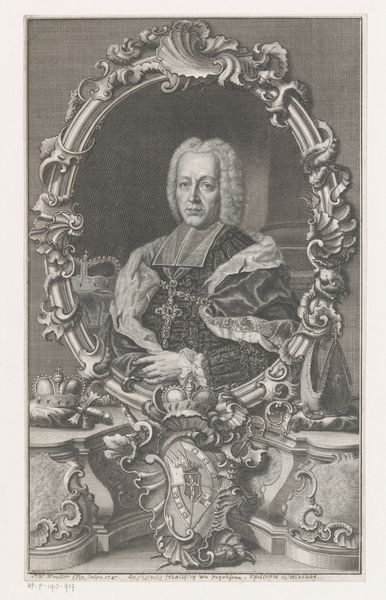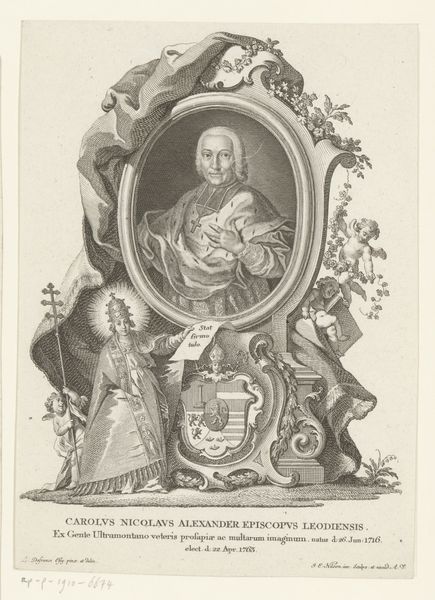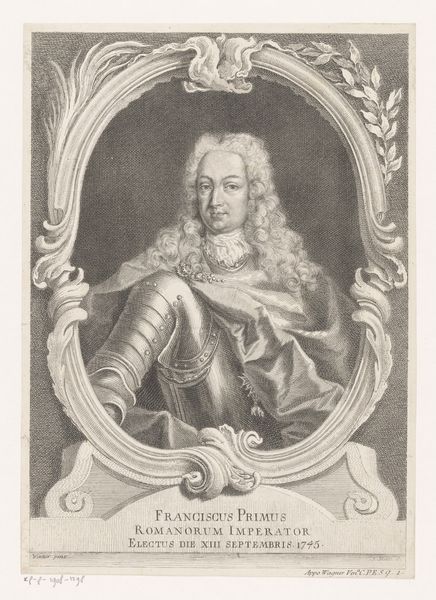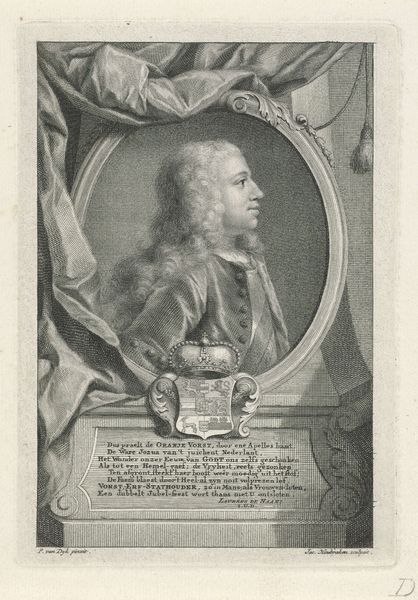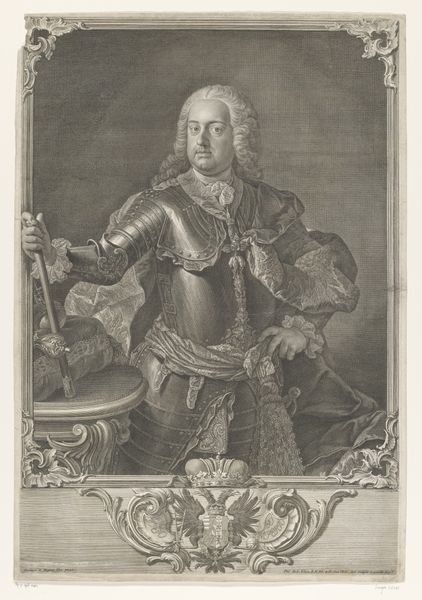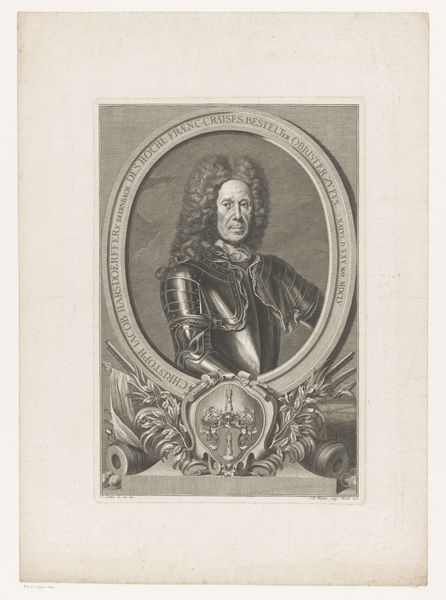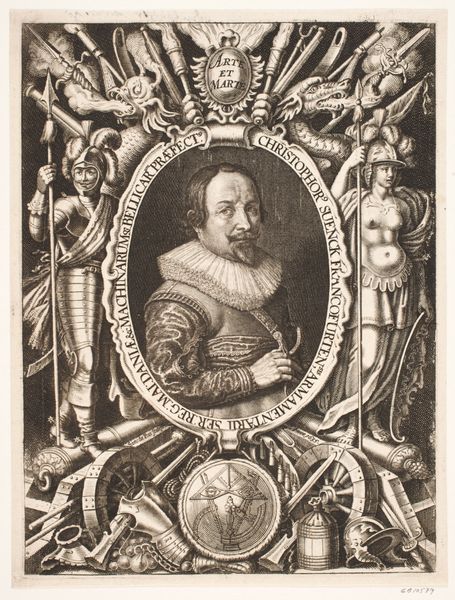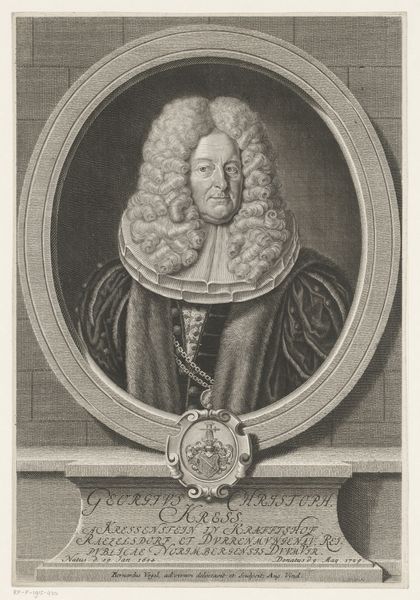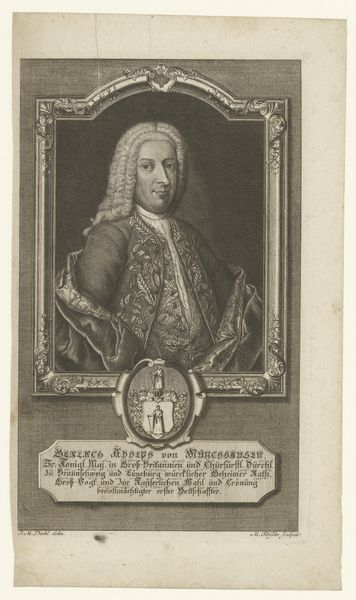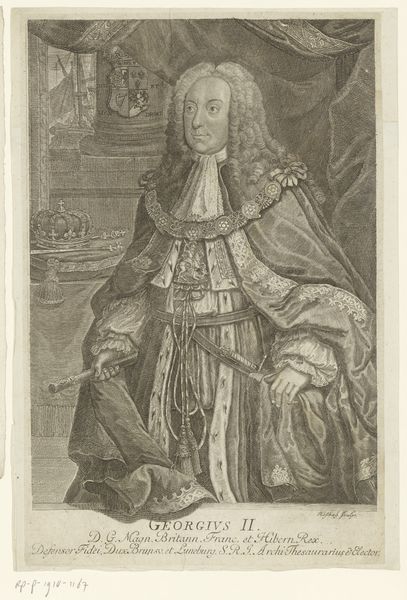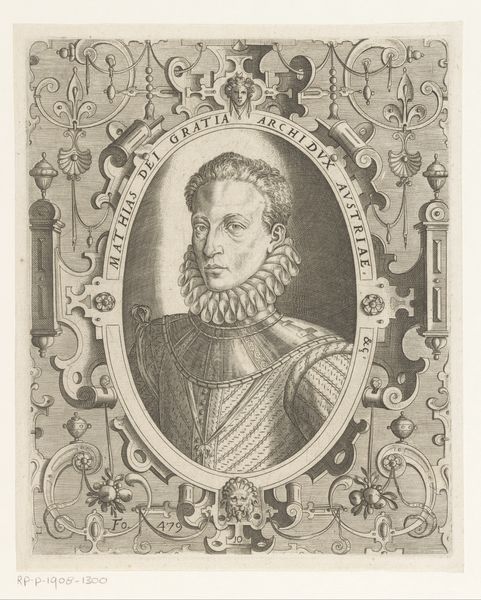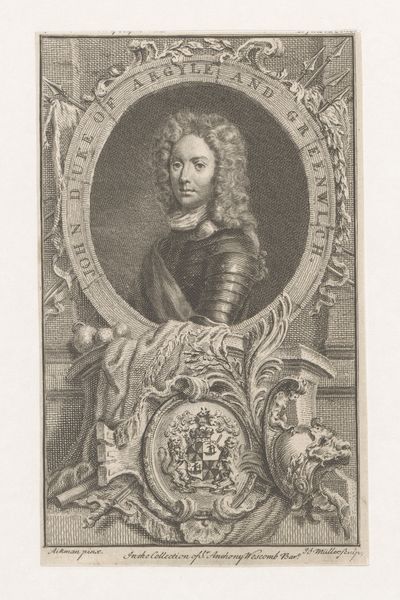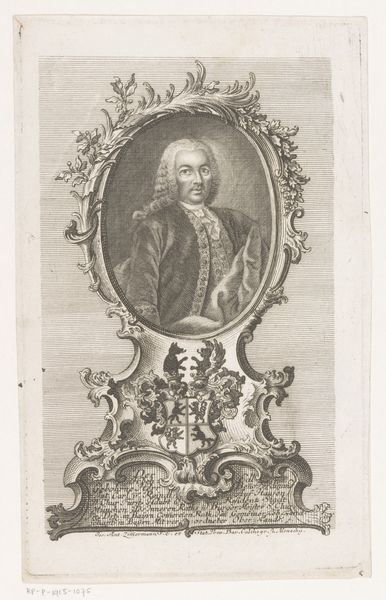
Portret van Christiaan VI, koning van Denemarken en Noorwegen 1730 - 1746
0:00
0:00
engraving
#
portrait
#
baroque
#
old engraving style
#
history-painting
#
engraving
Dimensions: height 376 mm, width 262 mm
Copyright: Rijks Museum: Open Domain
Curator: Here we have a remarkable engraving from the Baroque period, dating from around 1730 to 1746. It is titled "Portret van Christiaan VI, koning van Denemarken en Noorwegen," and it’s by Giovanni Marco Pitteri. Editor: It’s striking how much texture is achieved with what must be quite meticulous mark-making. The density of line and pattern really defines the royal figure and his ermine stole, even from a distance. Curator: Precisely. Pitteri has masterfully manipulated the engraving technique to suggest the opulence and weight of royal vestments. The intricate details around the oval frame, adorned with floral motifs and cherubic figures supporting the crowned shield, further emphasize the symbolic power and hierarchy. Consider the formal qualities; the rigid symmetry, the detailed textures, it creates an overall impression of absolute authority. Editor: Yet there's a certain flatness to it as well, ironically. Engraving, by its nature, struggles with depth, and the stark contrast between the lines and the white paper gives the image an almost graphic quality. I wonder, how did Pitteri negotiate the labor involved in such a detailed process, transforming it into this emblem of royal power? Were such pieces collaborative efforts? The craft and consumption contexts of works like these seem inherently intertwined. Curator: An important question to consider indeed. While it remains speculation how many hands produced this work, Pitteri certainly understood the assignment to translate the king's power, and it’s communicated through this detailed arrangement. There is not one line out of place. It echoes the period’s concern with order, system and a controlled, if slightly artificial, presentation. Editor: I leave pondering the tension inherent in reproducing royal likeness through what must be considered, in its own way, industrial processes, that both reproduces the likeness but also cheapens its aura. Curator: Indeed, it presents interesting lines of thought to examine as we conclude. Editor: Thanks for walking me through that, and offering your insights. Curator: It has been my pleasure. Thank you as well.
Comments
No comments
Be the first to comment and join the conversation on the ultimate creative platform.

